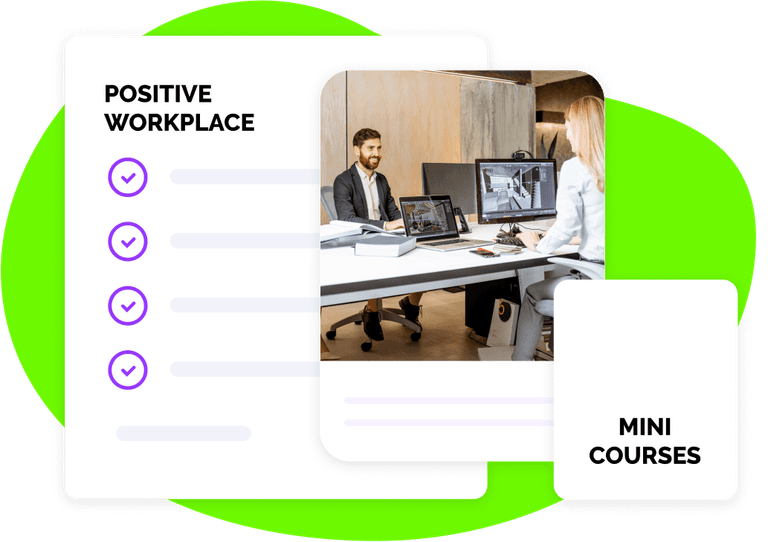When Does Diversity Affect The Workplace?


If you're wondering when diversity affects the workplace, then pay close attention to the current situation. From the varied mindsets of the millennial area to the virtual spaces brought on by the Coronavirus, the workplace has become more diverse than ever.
And, while the workplace is not flexible when it comes to picking who we interact with, we can be flexible in interacting with them. When looking for a way to diversify the workplace, there are several different things to consider — from personality types to age and motivation.
For this article, we shall delve further into three major factors affected by diversity that organizations should consider to get a competitive edge over others. These are:
Cultural Diversity
Race, language, ethnicity, and religious beliefs are all dimensions that make up a culture. To foster a workforce free of bias, stereotyping, and prejudices, organizations need to promote inclusion and embrace cultural diversity to develop cultural competence.
Cultural competence is a set of behaviors, practices, and attitudes that equip workers with the knowledge to interact with each other in a culturally appropriate manner.
Deliberate, considerate, and careful interweaving a culture that promotes inclusion and Cultural Diversity into an organization's framework makes all workers feel like they belong. Managing cultural diversity involves makes them feel as though their perspectives are valued and respected regardless of their background.
If you need help managing cultural variety in the workplace, try our diversity training. We provide modern training to help your business promote diversity and inclusion in the workplace.
How to create a culture of inclusion that embraces cultural diversity and inclusion in the workplace
When interacting with individuals, their unique circumstances and differences will allow you to communicate with them without offending their sensibilities. Generally, people like and want to fit in, so promoting tolerance and goodwill in the workplace is one way to make them fit in. Here's how organizations can go about it:
Be aware of the different cultural backgrounds represented in your organization
Simply being aware of the different cultures is an excellent start towards cultural inclusion. Once you become aware, you can pay close attention to the subtle nuances of the culture, allowing you to better communicate and interact with the individuals without being offensive.
Protect from discrimination
In a workplace with little diversity, workers are more likely to perform actions and say things that will poorly reflect their ethnic or racial prejudices.
Organizations can help prevent discrimination in the workplace by putting specific measures in place, such as investing in quality anti-harassment training and developing anti-harassment policies that protect the employees.
Please treat others the way that they want to be treated
When dealing with a diverse population, the presumption that people share the same passions and worldviews as you is illogical. So, the saying, "treat others as you would like to be treated," would not apply in such cases. People want you to respond to them according to how they express their views and opinions and not how you view them personally.
Celebrate people's culture
It may not seem like much, but celebrating a people's culture through sharing food and music is a big deal, and the gesture is highly appreciated. Organizations can plan for activity programs that showcase engaging stories, poetry, and deeds of people from different countries to better promote a diverse workforce.
The benefits of cultural diversity in the workplace
There are a ton of benefits to diversity in the workplace. In just a moment, we'll walk you through the wide range of ways your business can see improvements from a diverse workforce.
Increased productivity
Diverse teams produce versatile ideas. In such a time, a healthy, competitive atmosphere is created where team members compete to develop the best ideas and colorful approaches and solutions to the various issues and problems.
On the other hand, a homogeneous team tends to be more relaxed, and there's a lull in creativity.
Ultimately, the high productivity rate from the diverse team leads to economic benefit, a win-win situation for the organization and its employees.
Efficient marketing strategies
When organizations expand their operations to areas or countries with different cultures, having a marketing campaign that understands the needs of the local target audience is critical to the organization's success.
The company will benefit significantly if they have individuals in their marketing department who are well acquainted with the locals, language, and business culture.
Increased skill
Different backgrounds breed different, unique skill sets. Having someone in your team that is familiar with local customs and culture helps foreign projects run smoothly.
While professional skill is the essential aspect of hiring people, a new hire with diverse skills comes in handy. It is beneficial to the organization in the long run.
It breaks the language barrier
Many companies scale up their business by working with foreign partners. Meeting these foreign partners is made awkward and challenging with the language barriers that, more often than not, exist.
The discussions are bound to run smoothly if someone within the organization speaks or is familiar with the language and the business culture of the people you are meeting.
Gender Diversity
Gender diversity involves the equitable representation of people of different genders within an organization. Just having the right mix of males and females in the organization does not cut it anymore. There is transgender and non-binary individual, in addition to women, who need a safe work environment to reach their fullest potential.
Studies show that organizations with above-average levels of employee engagement and gender diversity perform up to 58% better than companies with below-average Diversity.
Creating a gender-diverse workplace
Industries where the workers are of one predominant gender struggles with understanding their clients as the clients are more diverse than the people serving them. The fight for gender equality and inclusivity has made it that much easier for individuals to break through to other industries that they wouldn't have dreamt of in the past.
Here's how you can create gender diverse and inclusive work environment:
Remove gender bias from job descriptions
Performance-based job descriptions are the way to go, as job descriptions based on qualifications shut most people out. This description focuses on what a person will accomplish once hired and not the papers they have.
Another good idea would be to avoid gendered language when advertising for a job. These are words that are masculine or feminine-coded.
Provide bias training
Sometimes, it is challenging to recognize gender bias, especially since it is always unconscious. Some of these biases are so ingrained that people do not recognize them at all.
Job recruiters should undergo bias training so that they can be able to evaluate candidates using a predetermined set of criteria and not hire people based on looks and first impressions.
Recognize gender stereotypes and challenge them
The fight for gender equality has been going on for decades, yet gender stereotypes still exist. The most common stereotype is the one regarding how men and women behave.
This is evident when people view certain behaviors when exhibited by women as bossy or bitchy while the same behavior in men is seen as assertive and strong.
Gender stereotyping is usually perpetrated by the language used. Organizations need to reassess their corporate policies and literature to encourage gender inclusivity.
Encourage fair promotion practices based on merit
Fair promotion practice begins with the diversification of the hiring committee. If one gender is dominant in the committee, then the chances are that the promotion will be biased towards that gender.
Age Diversity
Companies that embrace all ages are more likely to succeed as the average workplace now includes members of at least four generations.
Age diversity plays a vital role in creating an effective and inclusive workplace. Employers reap the benefits of the diversity of thought when they mix the different perspectives and strengths of both the young and old workers.
Age diversity refers to the acceptance of different ages in a professional environment.
The importance of age diversity
Reduces employee turnover
Older employees tend to be loyal workers and contribute to low turnover rates. Employee turnover is costly in terms of intellect lost and money spent. It also damages employee morale.
Including different aged workers in the workforce ensures that organizations retain skilled and experienced employees who drive profitability.
Improves work performance and productivity
Having teams with mix-aged workers brings their strengths and perspectives to the forefront, making it easier to solve complex problems. An age-diverse workforce also means that there are various points of view and experiences that bring about innovation.
Creates a mentorship platform
The older workers bring intellectual capital and extensive experience into the workplace. Younger workers can learn a great deal from the old who can groom them to take over once they retire. The old workers can also learn from the young ones about technology and other new industry-related skills.
So, when will a diverse workforce really effect the workplace?
While workplace diversity is something that all industries aspire to, it is no easy feat to achieve; the key to it is practical communication that enables people to understand the different people in the workplace. The effects of Diversity will be seen when:
We learn to appreciate other people's perspective
This appreciation should not be confused with agreement. The most important thing is trying and understanding where people are coming from when they voice their views, whether you agree with them or not. There is no wrong or correct opinion as an opinion is subjective, and each is entitled to their own. When you don't agree, then agree to disagree.
When we take responsibility for our words and actions
In situations where you did not mean to offend anyone with your words or actions, the prudent thing would be to apologize to that someone. This is because the impact of the message is more important than the intent behind it at that particular moment.
It is also essential to establish an open dialogue and speak up if you are receiving an offense. If people don't know that they have offended you, they cannot change and learn from it.
When we become self-aware of our words and actions, we can only create a workplace where one feels safe and heard.
We learn to listen with intention
Being part of a conversation means that we are speaking and listening to understand what is being said. When we genuinely want to hear, we should always look someone in the eyes, avoid distractions and restrain from unnecessary interruptions.
If the topic of conversation is rather sensitive, then choosing a neutral location where one is comfortable and feel free to express themselves is essential.
Closing thoughts on workplace diversity
With our workplaces increasingly becoming more diverse than ever where we are working across cultures, generations, ethnicity, and geography, having a firm grasp of workplace diversity is vital for growing professionally and personally.
Political correctness is slowly creeping into our communication where we have to watch what we say, to whom, and the impact it has on someone.
We are so used to unconsciously judging people by their race, skin color, voice, and their perceived stereotypes. It is high time that we drastically change how we interact with others to make workplace diversity a reality.





